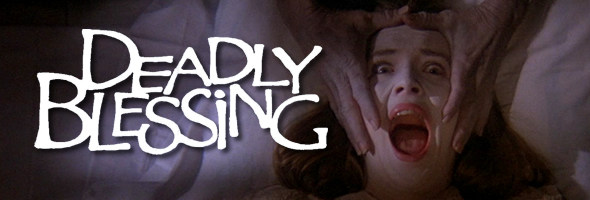
Color, 1981, 102m.
Directed by Wes Craven
Starring Maren Jensen, Sharon Stone, Susan Buckner, Jeff East, Ernest Borgnine, Lisa Hartman, Michael Berryman, Lois Nettleton, Colleen Riley, Douglas Barr
Arrow (Blu-Ray & DVD) (UK RB/R2 HD/PAL), Scream Factory (Blu-Ray & DVD) (US RA/R1 HD/NTSC), Umbrella (DVD) (Australia R0 PAL) / WS (1.78:1) (16:9)
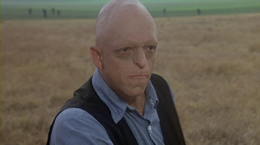 Released at the height of the slasher era, Deadly Blessing marked the first studio film for director Wes Craven after the vicious indie hits Last House on the Left and The Hills Have Eyes and came at a strange point in his career, with projects only coming along every couple of years or so. Here he tones down the brutality a bit to in
Released at the height of the slasher era, Deadly Blessing marked the first studio film for director Wes Craven after the vicious indie hits Last House on the Left and The Hills Have Eyes and came at a strange point in his career, with projects only coming along every couple of years or so. Here he tones down the brutality a bit to in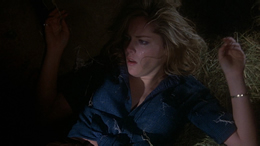 stead focus on a gothic tale about religious repression, superstition, and the growing independence of women in recent years, all packaged as a twisted murder mystery with a few grisly kill scenes for good measure.
stead focus on a gothic tale about religious repression, superstition, and the growing independence of women in recent years, all packaged as a twisted murder mystery with a few grisly kill scenes for good measure.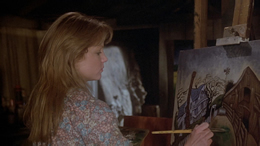
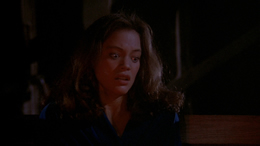 with a snake was later repurposed by Craven for A Nightmare on Elm Street. (It's also worth noting that Jensen, who retired from acting after making this film, uses a very blatant body double for two scenes here.) The cast is still exceptionally strong for an early '80s horror film, with Borgnine gleefully chewing up scenery left and right and Hartman (who would soon go on to a gig on TV's Knots Landing) ably handling a role that probably made a lot of her fans do a major double take. Also noteworthy is the effective music score by a young James Horner, who had just gotten his start with Roger Corman films like Humanoids from the Deep and Battle Beyond the Stars and was starting to move to the big time with this and Wolfen. Of course, he would soon team up with James Cameron for Aliens, and, well, the rest is history.
with a snake was later repurposed by Craven for A Nightmare on Elm Street. (It's also worth noting that Jensen, who retired from acting after making this film, uses a very blatant body double for two scenes here.) The cast is still exceptionally strong for an early '80s horror film, with Borgnine gleefully chewing up scenery left and right and Hartman (who would soon go on to a gig on TV's Knots Landing) ably handling a role that probably made a lot of her fans do a major double take. Also noteworthy is the effective music score by a young James Horner, who had just gotten his start with Roger Corman films like Humanoids from the Deep and Battle Beyond the Stars and was starting to move to the big time with this and Wolfen. Of course, he would soon team up with James Cameron for Aliens, and, well, the rest is history.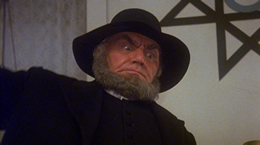 A 2012 Blu-Ray and DVD release from Scream Factory (the spectacular genre-oriented arm of Shout Factory) marked a welcome jump to HD for the film, with a solid boost in detail and an appearance very close to the texture and color balance of the 35mm theatrical prints. Interestingly, this American release contains a new, completely different solo commentary by Craven, who hadn't watched the film again in the ensuing five years and had obviously softened slightly in his outlook on the jarring, tacked-on ending. The basic points between the two commentaries are about the same, but the details tend to differ a bit as his memory obviously shifted a bit between the two. On both Craven talks about the origins of the screenplay by Glenn M Benest (who wrote Craven's earlier made-for-TV horror film, Summer of Fear), the state of his career at the time, his view of the film as a flawed but admirable effort that paved the way for his future horror work (after the odd detour of Swamp Thing and a particularly wacko sequel), and his thoughts on working with such a diverse cast. Also on the Scream Factory release are the trailer, a trio of TV spots (in one reel), radio spots, a stills gallery, and a quartet of newly-created HD featurettes: a Berryman interview ("Say Your Prayers") about working with Craven and becoming a cult horror icon, a chat with Buckner ("Secrets Revealed") covering her role in the film and particularly her big nocturnal car scene, a brief chat with FX designer John Naulin ("Rise of the Incubus") who created the monster glimpsed in the final scene, and Benest and co-writer Matthew Barr (who share final screenplay credit with Craven) talking about their ideas behind the film including the obvious Amish influence ("So It Was Written").
A 2012 Blu-Ray and DVD release from Scream Factory (the spectacular genre-oriented arm of Shout Factory) marked a welcome jump to HD for the film, with a solid boost in detail and an appearance very close to the texture and color balance of the 35mm theatrical prints. Interestingly, this American release contains a new, completely different solo commentary by Craven, who hadn't watched the film again in the ensuing five years and had obviously softened slightly in his outlook on the jarring, tacked-on ending. The basic points between the two commentaries are about the same, but the details tend to differ a bit as his memory obviously shifted a bit between the two. On both Craven talks about the origins of the screenplay by Glenn M Benest (who wrote Craven's earlier made-for-TV horror film, Summer of Fear), the state of his career at the time, his view of the film as a flawed but admirable effort that paved the way for his future horror work (after the odd detour of Swamp Thing and a particularly wacko sequel), and his thoughts on working with such a diverse cast. Also on the Scream Factory release are the trailer, a trio of TV spots (in one reel), radio spots, a stills gallery, and a quartet of newly-created HD featurettes: a Berryman interview ("Say Your Prayers") about working with Craven and becoming a cult horror icon, a chat with Buckner ("Secrets Revealed") covering her role in the film and particularly her big nocturnal car scene, a brief chat with FX designer John Naulin ("Rise of the Incubus") who created the monster glimpsed in the final scene, and Benest and co-writer Matthew Barr (who share final screenplay credit with Craven) talking about their ideas behind the film including the obvious Amish influence ("So It Was Written").